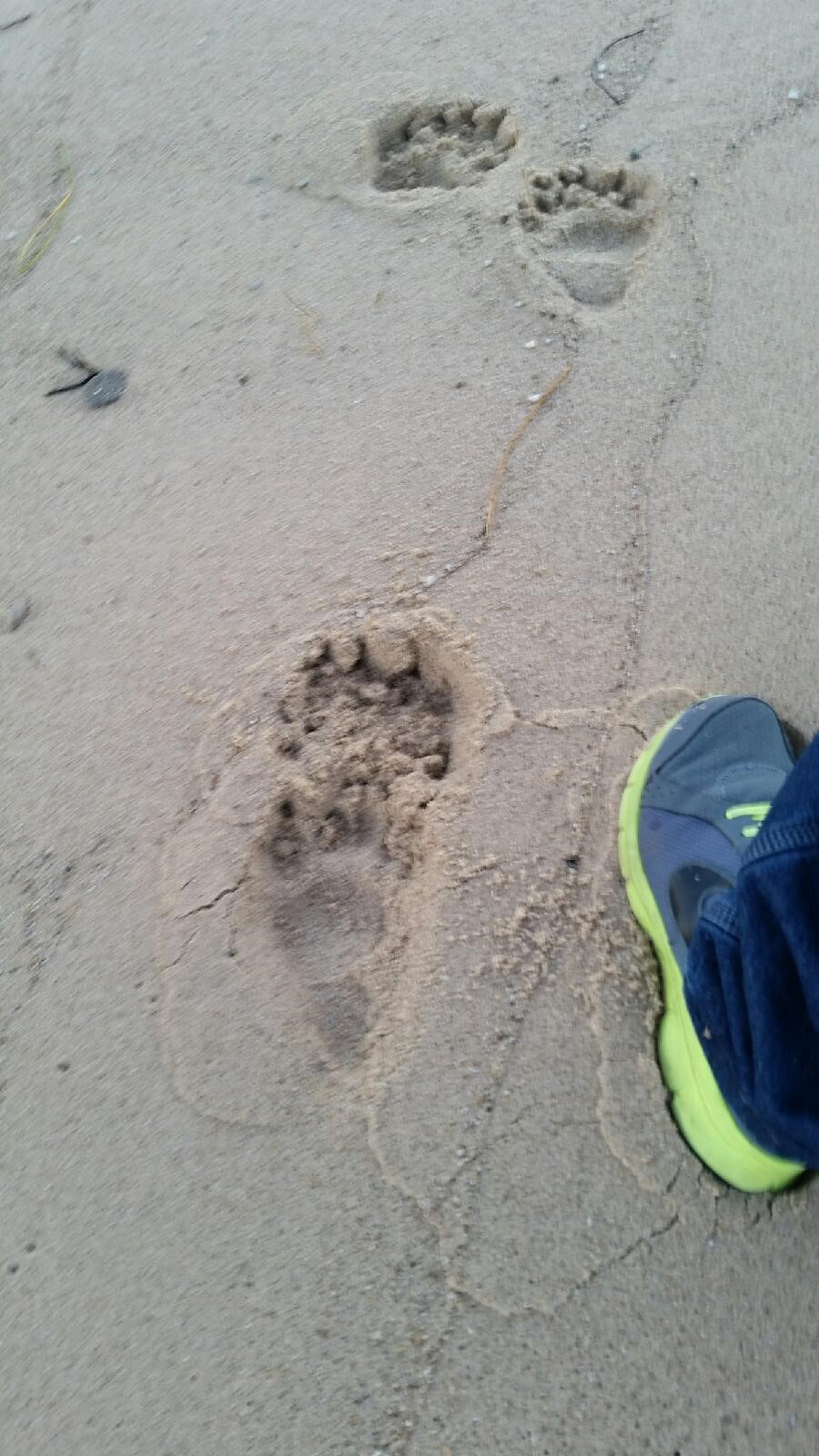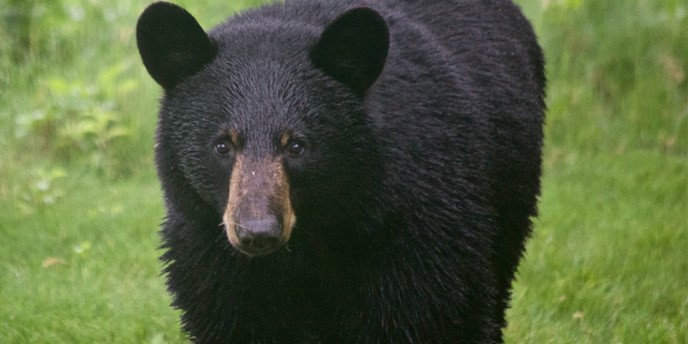Last week, three friends found something cool in the sand while out for a morning stroll along the beach just down from the Sylvan Inn in Glen Arbor—black bear tracks! And some pretty big ones judging by the photos of the prints.
Curious to know why black bears are drawn to water in the autumn months? Can you accurately guess a black bear’s weight from the size of its track? Along with the link to the MLive story on the Glen Arbor “beach bear,” check out these interesting black bear facts.

[source: mlive.com]
With a home range of anywhere from 100-square miles for males and 10- to 20-square miles for females (Michigan DNR), nobody can say for certain how many black bears are actually living within the boundaries of the Sleeping Bear National Lakeshore at any given time.
Visitors have reported more than 20 sightings to park rangers so far this year (9&10 News), most around the Lakeshore’s southern boundary near the Platte River. That’s one reason why the tracks found in the sand by friends Aimee Kauffman, Michele Holecek Ballein and Greg Ballein is pretty cool.
Last Sunday while walking along a more northerly stretch of Sleeping Bear Dunes beach outside Glen Arbor, the three found a long line of big black bear tracks in the sand. The friends took a bunch of pictures with Ballein’s size 11 shoe in the frame for comparison. MLive ran a slideshow of the photos and a story. (Click here to see it.)
One thing the story didn’t answer is why the bear was walking along the beach to begin with. Likewise, what is the best guess on the weight of the bear from the size of the track? Here are possible answers to those questions along with a few other interesting black bear facts you might not know:

[source: nps.gov]
Big Thirst
Along remote stretches of beach along the Sleeping Bear Dunes National Lakeshore is actually one of the easiest places to locate black bear tracks, especially in autumn. Why? One possible explanation, according to animal-zone.com, is that black bears get pretty thirsty this time of year.
In preparation for a long winter’s sleep, a female black bear might consume up to 15,000 calories per day in autumn. By comparison, the average adult woman consumes around 1,600 calories per day. If you factor in all the dead fish, the occasional bird and all the other delectable morsels the Lake Michigan waves bring to shore, it’s easy to understand why a bear might rather enjoy a moonlit stroll along the beach.
Paw Prints Give Estimate Of Bear Length, But Not Necessarily Weight
A bear’s weight may fluctuate up to 100 pounds depending on the time of year. Bears coming out of hibernation in the spring weigh far less than those packing on weight in the fall.
While this makes it tough to determine a bear’s weight from the paw print alone, a good formula for determining their “square measurement” is to measure the front pad and add one. For example, a bear with a front foot that measures 5 inches across would likely measure 6 feet from nose to tail. A bear with a 4-inch front foot would like square at around 5 feet.
Not True Hibernators
Many biologists, including those from the Michigan DNR, agree that—unlike bats, woodchucks and ground squirrels—black bears are not true hibernators. True hibernators drop their body temperature to nearly the level of its surroundings and sleep so deeply they are almost impossible to wake up. Black bear, however, only drop their body temperature by a few degrees and can easily be woken during their winter sleep. Michigan black bears usually enter dens in December and emerge in March or April. Den sites may be hallowed-out trees, brush piles, or even open ground nests.
All About The Claws
Different species of bear have different shaped claws. Climbing bears, like the black bear, have curved claws for climbing and ripping bark from trees to feed on the cadmium layer underneath. Bears that dig, such as grizzly bears, have straight and long claws.
How Many Black Bears Live In Michigan
According to the Michigan DNR, Approximately 15,000 to 19,000 black bears (including cubs) roam the hardwood and conifer forests of northern Michigan. About 90 percent of the bears live in the Upper Peninsula, while the remaining 10 percent are mainly found in the northern Lower Peninsula.